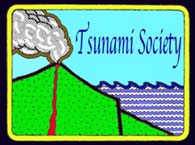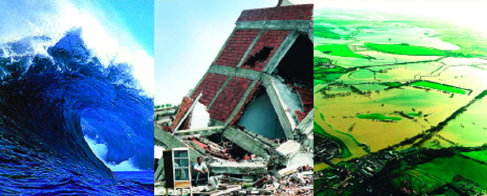..........................................................
ABSTRACTS
for Volume 32, No. 2
ABSTRACTS for Vol 32, No. 2, 2013
Complete Journal - May 2013 - STHVol32N2Y2013.pdf( 44 MB ) Compressed Version (1.8 MB)
IMPACT OF TSUNAMI FORCES ON STRUCTURES - The University of Ottawa Experience ( 31.8 MB) Compressed (516 KB)
D. Palermo, I. Nistor & T. Al-Faesly - University of Ottawa, Ottawa, CANADA
A. Cornett - National Research Council, Ottawa, CANADA
ABSTRACT
Over the past seven years, a comprehensive interdisciplinary research program has been conducted between researchers at the University of Ottawa and at the Canadian Hydraulics Centre (CHC) of the National Research Council of Canada. The objectives of this on-going research program are to identify and quantify forces that are imposed on near-shoreline structures when exposed to tsunami-induced hydraulic bores and to investigate mitigation strategies to dampen these forces. The experimental component of this research program involves two structural models (square and circular) that are tested in the High Discharge Flume at CHC. The structural models are instrumented to record base shear force-, base overturning moment-, pressure-, acceleration-, lateral displacement- and bore depth-time histories continually during testing. Impact loading resulting from wood debris of different sizes and located at pre-determined distances from the structural models is also studied. Furthermore, this research program aims to review tsunami-induced forces on structures prescribed by recent design documents.
Keywords: Tsunami; hydrodynamic loading; debris impact; building performance; and design guidelines.
Vol. 32, No. 2, page 58 (2013)
-------------------------------------------
METHOD FOR EVALUATING VULNERABILITY TO TSUNAMIS OF LOW-TO-MEDIUM INTENSITY- Application to the French Côte d’Azur (7.7 MB) Compressed (365 KB)
M. Terrier, D. Monfort, J. Lambert, S. Le Roy, R. Pedreros & O. Sedan
Bureau de Recherche Géologique et Minières, Orléans, FRANCE
ABSTRACT
Today, the study of tsunami risk has become a recurrent concern for crowded coastal areas, and this is true even for those that normally seem to be the least prone to the phenomenon. In this framework, the BRGM has for the past five years been compiling and managing an historical database devoted to tsunamis that may have affected the shores of France. Concurrently, simulations of tsunamis for plausible major seismic or gravity-driven events have been conducted. These have indicated that the south of France is indeed subject to the risk of a tsunami of low to medium intensity. Between 2009 and 2010, the research project RATCOM has made it possible to establish the principles for assessing vulnerability and calculating damage and human losses for moderate tsunamis. The method thus developed is complementary to those already proposed for tsunamis of larger intensity. Applications of this method using the BRICE (©brgm) simulation tool for risk scenarios reveal that the level of risk has increased quite substantially over just a few decades, even for tsunamis of low to medium intensity (water height less than 1 m). This is essentially due to the exponential growth of urban development along the coastline and to tourist pressure. Although such events will not cause destructions to buildings comparable to those in Indonesia (2004) and Japan (2011), still weak phenomena can be responsible for serious human losses. On the Côte d?Azur, the potential number of victims is large enough to warrant immediately instating preparatory measures designed to cope with the possibility of such a scenario.
Keywords: tsunami, base de données, simulation, dommages, France
Vol. 32, No. 2, page 77 (2013)
___________________________________________________________________________________________________
SEDIMENTARY FEATURES OF TSUNAMI BACKWASH DEPOSITS AS ASSESSED BY MICRO-BEAM SYNCHROTON X-RAY FLUORESCENCE ( μ-SXRF) AT THE SIAM PHOTON LABORATORY (3.7MB) Compressed (496 KB)
Siwatt Pongpiachan - NIDA Center for Research & Development of Disaster Prevention & Management, School of Social and Environmental Development, National Institute of Development Administration (NIDA), Bangkok, THAILAND
Kanjana Thumanu - Synchrotron Light Research Institute (Public Organization), Ministry of Science and Technology, THAILAND
Waraporn Tanthanuch - Synchrotron Light Research Institute (Public Organization), Ministry of Science and Technology, THAILAND
Danai Tipmanee - International Postgraduate Program in Environmental Management, Graduate School, Chulalongkorn University, Bangkok, THAILAND
Center of Excellence for Environmental and Hazardous Waste Management (EHWM), Chulalongkorn University, Bangkok, THAILAND
Panatda Kanchai - NIDA Center for Research & Development of Disaster Prevention & Management, School of Social and Environmental Development, National Institute of Development Administration (NIDA), Bangkok THAILAND
Klaus Schwarzer - Institute of Geosciences Sedimentology, Coastal and Continental Shelf Research, Christian Albrechts University, Kiel, GERMANY
Somchai Tancharakorn - Synchrotron Light Research Institute (Public Organization), Ministry of Science and Technology,THAILAND
ABSTRACT
Over the past few years, several attempts have been performed to find alternative “chemical proxies” in order to discriminate “tsunami backwash deposits” from “typical marine sediments”. A wide range of statistical tools has been selected in order to investigate the sediments and/or terrestrial soils transportation mechanism during the tsunami inundation period by using several types of chemical tracers. To relate the physical and chemical characteristics of Typical Marine Sediments (TMS), Tsunami Backwash Deposits (TBD), Onshore Tsunami Deposits (OTD) and Coastal Zone Soils (CZS) with their synchrotron radiation based micro-X-ray Fluorescence (m-SXRF) spectra, the m-SXRF spectra were built in the appropriate selected spectra range from 3,000 eV to 8,000 eV. Further challenges were considered by using the first-order derivative m-SXRF spectra coupled with Probability Distribution Function (PDF), Hierarchical Cluster Analysis (HCA) and Principal Component Analysis (PCA) in order to investigate the elemental distribution characteristics in various types of terrestrial soils and marine sediments. Dendrographic classifications and multi-dimensional plots of principal components (i.e. bi-polar and three dimensional plots) could indicate the impacts of terrestrial soils and/or marine sediments transport on onshore and/or offshore during the tsunami inundation period. Obviously, these advanced statistical analyses are quite useful and provide valuable information and thus shed new light on the study of paleotsunami.
Keywords: Andaman Sea; Tsunami Backwash Deposits; Micro-beam Synchrotron X-ray Fluorescence (m-SXRF); First Order Derivative; Hierarchical Cluster Analysis; Principal Component Analysis.
Vol. 32, No. 2, page 96 (2013)
____________________________________________________________________________________________________
A NEW TSUNAMI RISK SCALE FOR WARNING SYSTEMS - APPLICATION TO THE BAY OF ALGIERS IN ALGERIA, WEST MEDITERRANEAN SEA (1.5 MB) Compressed (283 KB)
L. Amir - USTHB- FSTGAT, Algiers, Algeria
A. Cisternas - Universidad de Chile, Departamento de Geofisica, Santiago, Chile
W. Dudley - University of Hawaii at Hilo, Hilo, Hawaii, USA
B.G. McAdoo - Vassar College, Poughkeepsie, NY, USA
G. Pararas-Carayannis - Tsunami Society International, Honolulu, Hawaii, USA
ABSTRACT
The city of Algiers and the surrounding coastal areas in northern Algeria are vulnerable to earthquakes which range from moderate to severe. In 2006, using several possible earthquake scenarios for the Western Mediterranean, the Japan International Cooperation Agency and the Algerian National Seismic Engineering Research Center predicted that heavy damage could occur in the Algiers region. Algerian Civil Defense authorities are particularly concerned by the threat of near-field earthquakes, associated slides and rock falls, as well as for tsunamis that can be generated. The present study proposes a new tsunami risk scale that provides information about the exposed communities and infrastructure, which can be used for regional tsunami alerts and warnings. Furthermore, it evaluates the vulnerability along the Bay of Algiers from tsunamigenic earthquakes. The JMA seismic intensity scale (Shindo scale) and the corresponding seismic peak ground accelerations are used in the evaluation. The results of tsunami modeling studies and of earthquake vulnerability assessment described by the present study, emphasize the significance of public education and preparedness in efforts to mitigate loss of life and damage to property.
Keywords: vulnerability, earthquakes, tsunami, risk, Bay of Algiers, Algeria
Vol. 32, No. 2, page 116 (2013)
----------------------------------------------------------------------
Copyright © 2013 - TSUNAMI SOCIETY INTERNATIONAL
-------------------------------------------------------------------------------------------------------------------------------------------




